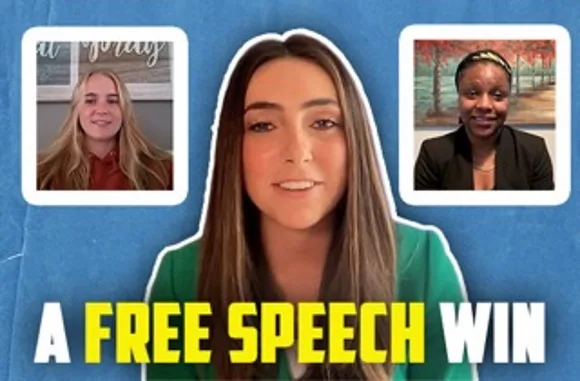A high school senior named Sabrina Steffans paid $50 to paint her senior parking spot with a clearly Christian design and message. School officials initially told her no, sparking a clash over faith and free expression. With legal help, the school backed down and Sabrina was allowed to complete her painting.
The dispute began when Sabrina wanted her parking square to reflect her faith, a visible testimony on school grounds. Administrators responded by denying permission, framing the issue as a rules problem rather than a question about free speech. Sabrina connected with attorney Keisha Russell from the First Liberty Institute, and the legal push clarified that student religious expression is protected speech.
This was not about vandalism or taking up public space; it was a senior’s paid, planned, and voluntary expression tied to her beliefs. The school’s reversal came after pressure from legal counsel and the simple fact that the policy could not lawfully prohibit religious content. The result reaffirmed that students don’t check their conscience at the gate when they step onto campus.
From a biblical standpoint, this moment matters because faith is not a private hobby to be hidden away. Scripture calls believers to be visible lights in their communities, and young people should be free to reflect that call in lawful, respectful ways. When a Christian student paints a parking spot with Bible-inspired art, she is doing what many believers have done for centuries: making faith plain and public.
At the heart of the case is a bigger question: will schools treat religious expression as equal to any other student speech? If administrators can ban Christian messages without cause, the door opens for selective censorship and confusion about constitutional rights. The school’s decision to relent is a reminder that neutrality—treating religious and nonreligious speech the same—is what protects everyone.
Young people learning to stand for their convictions need clear guardrails, not arbitrary silencing. Legal advocates often step in because individual students lack the resources to challenge overreach, and this instance shows how representation can restore balance. Allowing Sabrina to paint her spot sent a message: faith-based speech is not a threat when it’s peaceful and permitted just like any other expression.
Practical consequences ripple beyond one parking square; students see a precedent and administrators are nudged to update or clarify policies. Schools can preserve order while still honoring constitutional protections by applying rules evenly and transparently. When policies are neutral and content-blind, disputes like this vanish before they start.
This outcome also carries a cultural note: faith that is visible and legally protected strengthens campus diversity rather than undermining it. Tolerating peaceful religious expression shows respect for conscience and invites honest conversation among classmates. That kind of environment is healthier for learning and for forming young citizens who know both their rights and responsibilities.
Sabrina paid a small fee and won a big principle: the freedom to express faith in a lawful, public way at school. The story is simple but sharp—a reminder that students and parents should know their rights and be prepared to defend them. When courage meets counsel, small acts of witness can become firm reminders of religious liberty for everyone.

